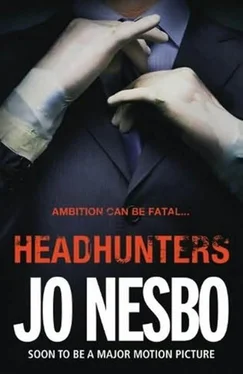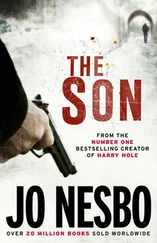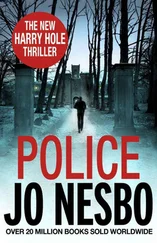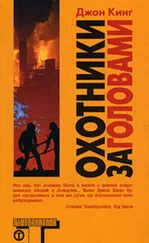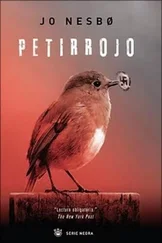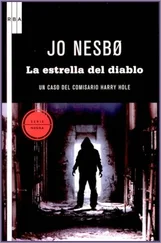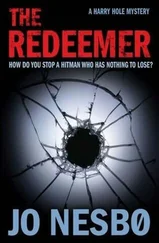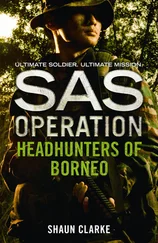‘This evening we have two items,’ he said with a voice that was already trembling a fraction with suppressed emotion as he stared with piercing eyes from the TV screen. ‘First we will be giving an overview of one of the most dramatic murder cases in Norway’s history. After a month of intense investigation the police now believe they have unravelled all the threads of the so-called Greve case. In all, it involves eight murders. A man who was strangled on his farm outside Elverum. Four policemen whose car was rammed by a stolen juggernaut. A woman who was shot in her Oslo home. All of this before the two main protagonists in this drama gunned each other down in a house in Tonsenhagen here in Oslo. The last episode in this drama was caught on film because the house was fitted with CCTV, and copies of the video have already leaked out and have been circulating on the Internet over the last few weeks.’
Dybwad bumped up the dose of pathos.
‘And, as if that were not enough, at the centre of this bizarre case is a world-famous painting. Peter Paul Rubens’s The Calydonian Boar Hunt had been missing, feared lost, ever since the last world war. Until it was found four weeks ago in a…’ Here Dybwad became so excited that he started to stammer. ‘… in – in an outside toilet here in Norway!’
After this introduction Dybwad had to touch down before taking off again.
‘We are joined by someone who can help us get to the heart of the Greve case. Brede Sperre…’
Dybwad paused for a moment as this was the cue for the producer in the control room to switch to camera 2. The producer chose a side shot of the only guest in the studio, a tall, good-looking, blond man. An expensive suit for a civil servant, an open-necked shirt, mother-of-pearl buttons, probably put together by the ELLE stylist he was secretly – or almost secretly – shagging. None of the female viewers would be switching channels for the time being.
‘You led the Kripos investigation into this murder case. You have almost fifteen years’ experience in the police force. Have you ever encountered anything like this before?’
‘All cases are different,’ Brede Sperre said, with effortless self-assurance. You didn’t need to be a fortune teller to know that his mobile phone would be crammed with texts after the broadcast. A woman wondering if he was single and fancied a coffee with an interesting person; a single mother, living just outside Oslo, with her own car and loads of free time next week. A young man who liked older, resolute men. Some skipped the preliminaries and just sent a photo. One they were pleased with, nice smile, straight from the hairdresser, nice clothes, suitably low neckline. Or without a face. Or clothes.
‘But, of course, eight murders is not your usual bread-and-butter case,’ Sperre said in his stilted voice. And added, hearing that an understatement was a trifle on the nonchalant side: ‘Not here and not in countries which it would be na-ural to compare ourselves with.’
‘Brede Sperre,’ said Dybwad, who was always careful to repeat the guest’s name a couple of times, so that it stuck in viewers’ minds, ‘this is a case which has aroused international interest. Aside from the murder of eight people, this heightened attention is primarily down to the fact that a world-famous old master has played a key role, isn’t it?’
‘Well, it’s certainly a painting familiar to art connoisseurs.’
‘Now I think we can say without fear of contradiction that it is world-famous!’ Dybwad exclaimed, trying to catch Sperre’s eye, perhaps to remind him about what they had discussed before the show, that they were a team, two people who should work together to tell a fantastic story. Devaluing the fame of the painting had the effect of making the story less fantastic.
‘Nevertheless Rubens’s painting must have been of central importance when Kripos, with no survivors or other witnesses to rely on, had to fit all the pieces of this puzzle together. Isn’t that right, Inspector Sperre?’
‘That is correct.’
‘You will be presenting the final case report tomorrow, but I understand you can already tell our viewers what actually happened in the Greve case, the whole course of events from start to finish.’
Brede Sperre nodded. But instead of starting to speak he raised the glass of water on the desk in front of him and took a small sip. Dybwad, to the right of the picture, was beaming. The two of them might have arranged this little spot of theatricality in advance, this pause that made viewers perch on the very edge of their sofas, all eyes and ears. Or perhaps Sperre had taken over the stage management. The policeman put down his glass and took a deep breath.
‘Before I joined Kripos, I was, as you know, in the Robberies Unit and had inve-tigated the many art thefts that have occurred in Oslo over the last two years. The similarities suggested that there was a gang behind them. At a very early stage we had been focusing on the security company Tripolis as most of the residences that were burgled had alarms from there. And now we know that one of the people behind the thefts worked for Tripolis. Ove Kjikerud had access to property owners’ keys at Tripolis and thus could also switch off alarms. In addition, Kjikerud had clearly found a way to delete reports of break-ins from the system’s databases. We assume Kjikerud himself carried out most of the bur-laries. But he needed a person who had some insight into the art world, who spoke to other art enthusiasts in Oslo and could gain an overview of which pictures were hanging where.’
‘And this is where Clas Greve came in?’
‘Yes. He himself had a fine collection of art in his apartment in Oscars gate and hung out with art connoisseurs, particularly at Galleri E, where he was often observed. There he spoke to people who themselves had valuable paintings or could tell him who had. This was i-formation that Greve in turn passed on to Kjikerud.’
‘What did Kjikerud do with the paintings after stealing them?’
‘Through an anonymous tip-off, we have managed to trace a fence, a receiver of stolen goods, in Gothenburg, an old friend of the police who has already confessed to having been in contact with Kjikerud. In interviews this person has told our Swedish colleagues that the last time he heard anything from Kjikerud was when he called and said that the Rubens picture was on its way. The fence said he found it difficult to believe that this was true. And neither the painting nor Kjikerud turned up in Gothenburg…’
‘No, it didn’t,’ Dybwad rumbled with tragic gravity. ‘Because what happened?’
Sperre smirked before continuing, as though finding the presenter’s melodrama rather amusing. ‘It seems that Kjikerud and Greve decided not to deal with the fence in Gothenburg. They may have decided to sell the painting themselves. Remember that the receiver rakes in fifty per cent of the sale price, and on this occasion the sums they were talking about were quite different from the proceeds from other pictures. As the former CEO of a Dutch technology company which had dealings with Russia and several ex-Eastern bloc countries, Greve had a pile of con-acts, not necessarily all on the right side of the law. And this was Greve and Kjikerud’s chance to be financially secure for the rest of their lives.’
‘But on the face of it Greve seemed like a person who had enough money, didn’t he?’
‘The technology company which he part-owned was going through a rough patch, and he had just lost his post there. Apparently he had a lifestyle which necessitated income. We know he had recently applied for a job with a Norwegian company in Horten.’
‘So Kjikerud didn’t turn up for the meeting with the fence because he and Greve wanted to sell the painting themselves. What happened then?’
Читать дальше
